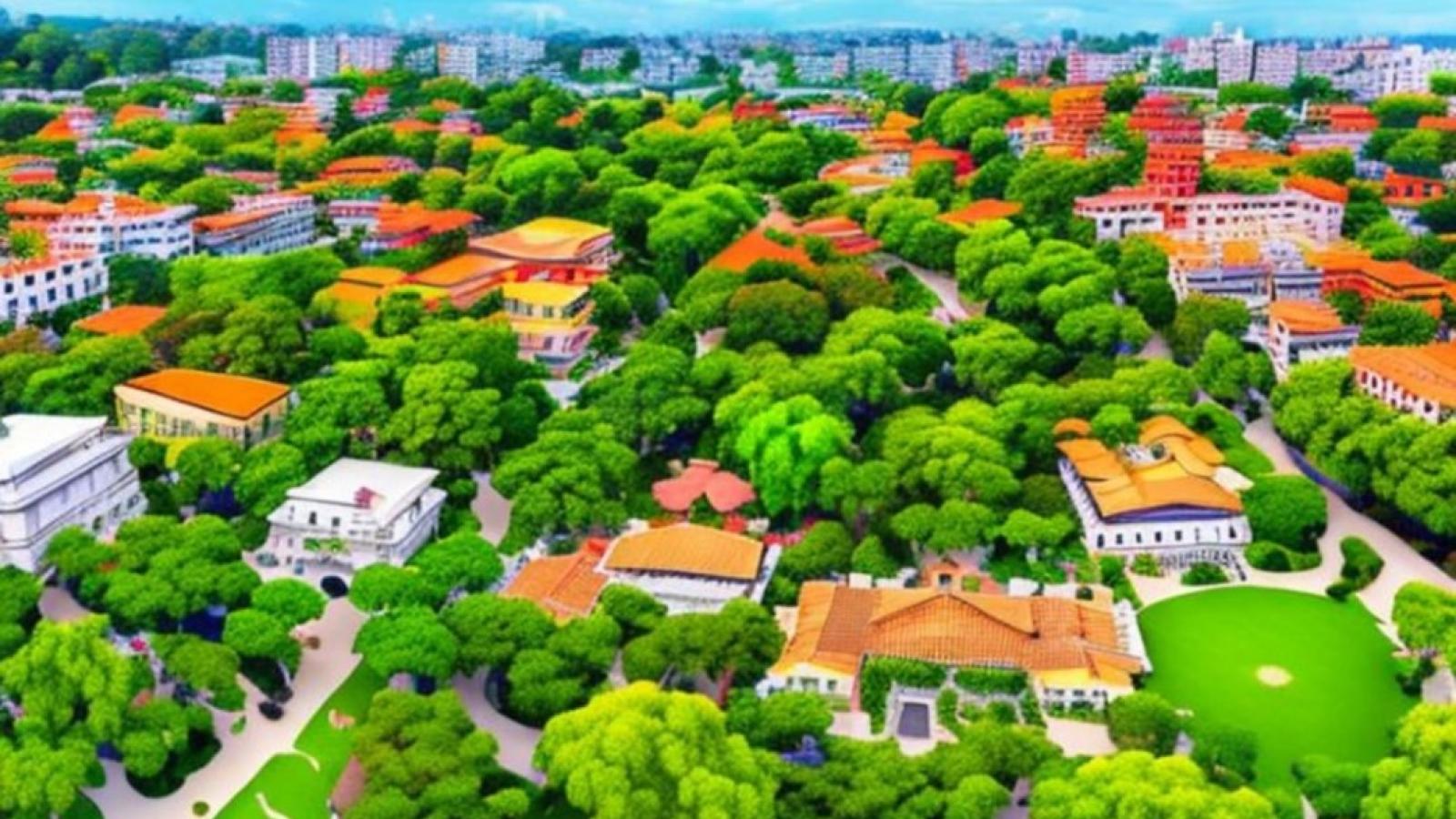Opinion
Visualizing the City of the Future: How AI can help the sustainable urban transition
Visualizing what green, inclusive cities look like can help us build them. At the GEF Assembly, UrbanShift guided participants in how to productively visualize future cities with AI.
In our rapidly urbanizing world, the fate of nature rests heavily on the shoulders of cities.
Urban expansion, climate change, and natural habitat degradation have placed immense pressures on urban areas, threatening the health and well-being of communities and the ecosystems that support them.
Nature, in the form of forests, wetlands, green belts, gardens and parks in and around cities as well as green infrastructure such as natural wastewater plants, green roofs, green walls, ecological corridors deliver important ecosystem services to urban dwellers. Apart from building resilience and reducing disaster and extreme heat related risks, they can contribute to the achievement of multiple sustainable development goals (SDGs), such as climate adaptation and mitigation; sustainable food production and consumption, clean water and air; thermal comfort with cooler streets and buildings; and access to green public spaces for recreation and physical, mental and spiritual well-being.
We need to design and redesign cities and urban infrastructure with nature in mind. But doing so is much more complex than saying it needs to happen.
For cities to make peace with nature, understanding its significant impact and recognizing the multiple benefits it provides is crucial – and visualization can help tremendously.
Interactive Visualization, Using AI
On August 22, 2023, UrbanShift and the Global Platform for Sustainable Cities hosted an official side event during the Seventh GEF Assembly in Vancouver, Canada. This session explored innovative solutions and approaches to overcoming the barriers to designing Nature-positive Cities, while empowering participants to envision solutions for integrating and unleashing the power of nature-based solutions into cities.
By engaging in interactive visioning exercises using AI online tools, participants were able to generate images of nature-positive cities of the future. Participants, split into small discussion groups, were pushed to think outside the box about what it means to develop cities with nature in mind. Each group tasked with answering the question: what does a nature-positive city look like in the future?
After vivid discussions amongst the groups, participants had to define the main physical elements that would compose nature-friendly, sustainable cities of the future.
Their discussions and definitions were then turned into short, descriptive prompts that were fed into an AI visualization online tool. While many of the elements suggested overlapped, the range of images generated illustrated the many options cities have for integrating nature now and into the future. Make sure you scroll all the way down to see the prompts and the images they generated!
Seeing our Nature-Positive Future
One interesting aspect of this exercise was the richness and diversity of prompts developed by the discussion groups. Building nature-positive cities requires the integration of many sustainable development strategies, from building a regenerative circular economy to providing accessible green open spaces, and ensuring equity and safety.
Recognizing that AI visualisation is not always accurate nor realistic, this exercise was nonetheless an impactful way to initiate conversations around sustainability and nature in cities.
But why was this visualization exercise so important to understand and advocate for nature-positive cities?
Because seeing is believing. When we can visualize our cities thriving with green roofs, accessible parks, and vibrant green spaces, it becomes real. In a world overwhelmed by complexity, a clear, inspiring image speaks volumes. It's a rallying point for change shared in a universal language.
Our interactive visualization activity wasn't just a brainstorming session; it is a starting point of a tangible roadmap. By giving people a concrete vision of a nature-positive city, we empowered them to be advocates for transformation. Through these visuals, we ignited conversations that are vital for our cities' sustainable future.
When we can clearly picture what we want, we're more likely to make it happen.
What Could Nature-Positive Cities Look Like?
Explore each of the prompts that the group came up with, and see how cities can transform if these ideas are applied. What would your dream nature-positive city look like? Feel free to do this exercise on your own, and share what you come up with at urbanshift@shiftcities.org!

An eye-level photo of the Los Angeles financial district, with green corridors, narrow streets, public space, roof gardens and eco-brutalism, pollinators, public transport, in realistic style, no cars.

A dream drone picture of a healthy city with native trees and green spaces, bees and butterflies, different groups of people, and green industries, with no cars and no waste. In a colorful and joyful style.

A sketch of a street, with a river, birds, and people, in Latin America with recreational space, shading and birds. No cars, waste, or violence.

A realistic 3D water-painting in natural colors of a city which has sustainable mobility, a circular economy, is equitable, climate-smart, nature-positive, climate resilient, and promotes wellness, and does not have indifferent people.
Want to learn more about integrating nature into urban development? Take UrbanShift's free, online course on nature-based solutions! Learn more and enroll at shiftcities.org/online-city-academy.

After a devastating earthquake, Marrakech plans to build back with resilience
Reflecting on how, with UrbanShift's support, the city of Marrakech is making strides to enhance its urban nature and lower emissions.

Enhancing Urban Infrastructure Resilience through Nature-Based Solutions in South Asian Cities
This webinar explores how nature can transform South Asian cities into resilient, sustainable, and thriving urban spaces.

How African cities can develop to become green, resilient, and inclusive
During the Green & Resilient UrbanShift Africa Forum, leaders from across the continent united to learn and share insights on accelerating transformative urban planning approaches—and the finance needed to implement them.

UrbanShift Looks Back: Reflecting on the Impact of our Capacity-Building Offer
WRI’s Mariana Orloff and John-Rob Pool share highlights and learnings from our broad capacity-building efforts, from the City Academy to Peer-to-Peer Exchanges.

